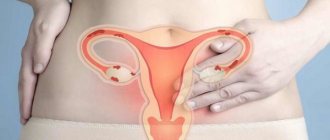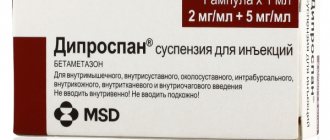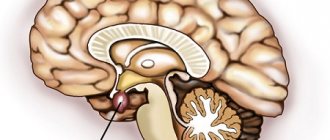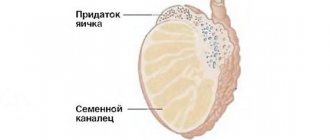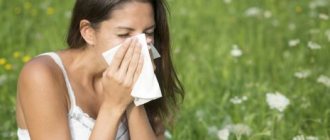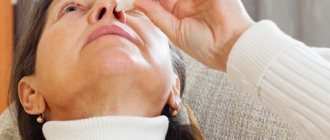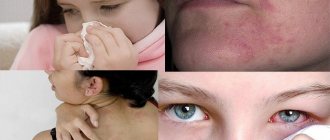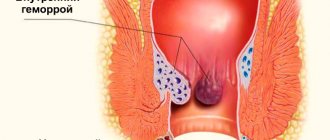Causes of the disease
Science knows neither the exact causes nor the mechanism of development of vitiligo. There is an assumption that the appearance of vitiligo disease can be explained by the following factors:
- exposure to certain chemicals or medications;
- pathology of the autonomic nervous system;
- diseases of endocrine organs;
- hereditary predisposition;
- chronic diseases.
Some experts believe that the development of vitiligo is facilitated by factors that provoke other autoimmune skin diseases: immune disorders combined with injuries, inflammatory and necrotic lesions of the skin, intoxication, and infectious process. The occurrence of vitiligo disease is also associated with parasitic infections, imbalance of minerals, vitamins, deficiency of iron, copper, selenium and zinc.
Diagnostics
Although diagnosis of the disease is usually made on the basis of clinical findings, a biopsy is sometimes required to differentiate vitiligo from other hypopigmenting or depigmenting human disorders.
Microscopic examination of human skin shows a complete absence of melanocytes due to complete loss of epidermal pigmentation.
Superficial perivascular and perifollicular lymphocytic infiltrates (accumulation of cellular elements mixed with blood and lymph in body tissues) can be observed at the edge of vitiligo lesions in accordance with a cell-mediated process that destroys melanocytes.
Other documented histological findings include the following:
- degenerative changes in keratinocytes and melanocytes in borderline areas and adjacent skin;
- increase in the number of Langerhans cells;
- epidermal vacuolization;
- thickening of the main membrane.
The loss of pigment and melanocytes in the epidermis is studied using Fontana-Masson staining and immunohistochemistry (a method for identifying the specific antigenic properties of malignant tumors).
Main signs and symptoms
The main manifestation of the disease is white spots on the body. Foci of the disease can occur at any age, often in childhood and adolescence, and can form on all areas of the skin. The places where the skin is most traumatized are at greatest risk for the appearance of depigmented areas - spots appear on the legs, knees, hands, and elbows.
In areas of vitiligo, sweating is impaired, and the skin becomes unable to respond normally to cold and heat. The hair on the whitened areas of the body in many patients also becomes discolored. Individual spots can disappear spontaneously even without treatment, but as the disease progresses, foci of depigmentation can form at the sites of recent injuries, friction or pressure on the skin.
The initial stage of vitiligo is very mild. It is characterized by minor foci of depigmentation - small spots that look like a noticeable, but not particularly noticeable cosmetic defect that is easy to disguise with clothing. Gradually, the light spots on the skin enlarge and unite, forming large areas of milky white color.
Vitiligo disease does not cause any disturbing symptoms; it is not contagious, but it is difficult to cure. Vitiligo is perceived by patients as a serious aesthetic defect, so the disease can cause severe psychological discomfort. After tanning, discolored areas become very noticeable; the affected areas of the skin are very sensitive to ultraviolet radiation and quickly “burn.”
- Causes, symptoms and treatment of white lichen in adults and children, prevention of the disease
- What are autoimmune skin diseases - causes, symptoms and treatment
- Molluscum on the skin of a child: causes and treatment
Reasons for the development of this pathology
The disease is not congenital, but occurs during a person’s life. The development of vitiligo is influenced by many internal and external causes, but dark-skinned people are more susceptible to it.
The main provoking reasons are the following:
- the development of autoimmune processes, that is, damage to healthy tissues of the body by antibodies;
- genetic predisposition;
- brown eyes (it has been scientifically proven that those with dark eyes have a higher risk of developing vitiligo than people with blue or green eyes);
- disruption of the functionality of the endocrine system;
- dysfunction of the endocrine system;
- injuries affecting the skin, such as burns;
- prolonged exposure to aggressive sunlight;
- long-term use of medications;
- low quality cosmetics;
- exposure to aggressive chemicals on the skin;
- gastrointestinal diseases.
Read about whether vitiligo is contagious and how it is transmitted in this article.
In addition to treatment, patients with vitiligo may need help on a psychological level, since this pathology has a depressing effect on the patient, causing a feeling of inferiority and depression.
Treatment of vitiligo
Various factors contribute to the occurrence of the disease, so its treatment requires an integrated approach. However, dermatologists do not yet have a clear scheme and reliable methods for treating vitiligo and eliminating spots. Most therapeutic measures are aimed at preventing the progression of the disease and reducing depigmented lesions on the skin.
Diet food
The disease vitiligo develops under the influence of metabolic disorders, and therefore an important condition for its successful treatment and getting rid of spots is a special diet. The patient must eat according to the following rules:
- adhere to a fractional diet;
- start each main meal with fresh vegetables or fruits;
- eat foods rich in copper, manganese, selenium - eggs, meat, sea fish, seafood, cottage cheese, nuts, rose hips, wheat bran, legumes, grains;
- refrain from overly spicy foods, alcohol, foods with preservatives, and processed foods;
- do not eat fried food, but eat food baked in the oven, steamed or boiled.
Local treatment
The following ointments, creams, gels and lotions are used as local preparations for the treatment of vitiligo disease:
- hormonal ointments that slow down the breakdown of melanin in skin cells;
- medications that stimulate melanin production;
- medications based on calcineurin inhibitors;
- cosmetic preparations that mask white spots (Covermark, Vitadye cosmetics, self-tanning or whitening products for unaffected skin).
For hormonal treatment of vitiligo, potent corticosteroid drugs such as Fluticasone and Flixotide are used. They are used continuously for three months (once during the day) or six months with breaks: the product is applied to vitiligo spots for 15 days, then a 15-day break follows, and this is repeated six times over six months.
To stimulate the synthesis of melanocytes (pigment cells of the skin) in case of illness, a lotion for vitiligo spots “Melagenin” is prescribed. The solution is applied to depigmented areas of the skin once a day, using until the desired therapeutic effect is obtained. If necessary, short breaks in treatment are taken. Medicines for vitiligo based on calcineurin inhibitors (Elidel, Protopic) are used twice a day for six months.
Systemic therapy
Vitiligo disease requires an individual approach when prescribing systemic medications. The following groups of medications can be used in the complex treatment of the disease:
- Photosensitizers. They increase sensitivity to solar radiation. An example of such drugs is Vitilem. It is taken continuously for six months, children from 6 to 12 years old take 1 tablet 2 times a day, adults take 1 tablet 3 or 4 times.
- Corticosteroids.0 These are hormonal drugs that help stop the progression of vitiligo. For example, Betamethasone or Dexamethasone. These drugs are taken at 5 mg per day, the dose of medication for the child is reduced by half. Funds are prescribed for a period of 6 months to 2 years.
- Immunomodulators. These products stimulate and support the immune system. For vitiligo, it is preferable to use natural treatments - herbal remedies. An example is “Echinacea”. Adults and children over 12 years of age should take 1 tablet 3-4 times a day. Continuous use of the medication is permitted for a period of no longer than 8 weeks.
- Vitamins, minerals, food supplements. Patients with vitiligo are prescribed ascorbic and pantothenic acid, vitamins B1 and B2, iron supplements, 1% copper sulfate solution. Laboratory blood tests may be performed to determine how to treat a patient and determine the exact dosage of medications to treat the disease.
Physiotherapy
- How to identify diseases by the hands - the main signs of organ diseases on the skin and nails
- Ringworm on the arm of a child or adult - types and causes of the disease, symptoms, diagnosis and treatment
- What do white spots and dots on fingernails and toenails mean?
Physiotherapy is very effective in treating vitiligo disease. The most effective types of physiotherapy are:
- UVB therapy – dosed ultraviolet irradiation of affected areas of the skin using a special lamp;
- PUVA therapy - irradiation of the skin with long-wave ultraviolet radiation in combination with photosensitizing drugs;
- laser therapy – exposure of vitiligo-affected skin to laser radiation of varying power;
- electrophoresis on the lesions with a 0.5% copper solution.
Folk remedies
Having tried different methods of treating the disease and still not finding how to get rid of white spots on the body, patients often use unconventional remedies. Traditional medicine includes many home recipes that are good for vitiligo. The most effective are the following:
- St. John's wort infusion. Pour 1 teaspoon of herb into 0.2 liters of boiling water and leave for half an hour. Take the resulting solution after meals, 3 times daily. The course of treatment lasts 3 weeks. After this, it is recommended to take a week's break and then take a second course of taking the drug.
- St. John's wort ointment. Mix thoroughly chopped herb with olive oil in a ratio of 1:10. Boil in a water bath, leave to cool, then strain. The resulting ointment should be stored in a dark place. Compresses are made from it, which need to be applied to vitiligo lesions once a day for 30 minutes. The duration of treatment is 40 days.
- Mountain arnica infusion. Pour 40 g of herb into 0.4 liters of boiling water and leave for 20 minutes. Take 100 ml four times a day before meals.
- Compresses made from red clay and ginger juice. Mix the components in equal parts. Spread the resulting mixture on a piece of gauze, then apply to the areas affected by vitiligo. Keep the compress on the skin until the product is completely dry. There are no restrictions on treatment time.
Surgical intervention
There are several time-tested and innovative methods of surgical treatment of vitiligo, but they all have contraindications and do not guarantee one hundred percent elimination of the disease. Carrying out skin surgeries requires modern high-tech equipment, so the most effective of them involve treatment in Moscow or in foreign clinics. Surgery for vitiligo can be as follows:
- Skin grafting. The operation is performed in the absence of disease progression. The lesions are removed, and in their place healthy skin is implanted, which is taken from other areas.
- Melanocyte transplantation. Melanocytes grown from the patient's pigment cells are placed on a special carrier, which is then applied to depigmented areas of the skin.
- Autologous minigrafts. Skin micrografts are implanted into vitiligo lesions. This method is more complex than transplanting entire flaps of skin, but it has fewer risks and side effects.
Corticosteroid-based drugs
The development of the disease is observed in the presence of autoimmune inhibition of melanocyte functions. For vitiligo, corticosteroid ointment is characterized by immunosuppressive properties, due to which the cells responsible for the production of pigment begin to function normally. Such products should not be smeared in the eye area. With prolonged use, this can lead to problems with the lens.
Treatment of affected skin with corticosteroid medications is contraindicated in pregnant women, nursing mothers and children. This leads to stunted growth of the baby and the formation of a congenital disease.
The following hormonal agents are effective:
- Hydrocortisone ointment 1%. The drug is applied to light spots two to three times a day.
- Momate 0.1% in the form of ointment or cream. Both dosage forms have the same effect on the pathological area. The active component of Momata is the artificial hormone mometasone, which penetrates through the integument into the blood supply with a significant concentration. The advantages of the medicine are convenient use. The affected areas are treated only once a day.
- Advantan 0.1% ointment and cream. The drug contains methylprednisolone. This medicine is used for a long time even in young children and in women during the lactation period, but when treating the affected areas, you should avoid getting the ointment on the chest. Pathological areas should be treated once every day.
The results of treatment with corticosteroid ointments can be seen after 2-3 weeks of therapy. Gradually, the vitiligo spots darken, and the tone of the adjacent skin becomes more even. To achieve a sustainable effect, the ointment is used for approximately 3 months. The duration of therapy in children is shorter.
How to treat vitiligo in children
To treat a disease in a child, almost all methods are used that are prescribed to adults. The exception is systemic therapy with hormonal drugs. It is used only if there are strict indications, for a minimum time and in the lowest therapeutic doses. UV skin irradiation sessions and PUVA therapy are contraindicated for children under 12 years of age.
According to the famous pediatrician Evgeniy Komarovsky, when treating this disease, it is important to take care of the child’s psychological state. If peers tease him, and ill-mannered people constantly look at spots on his skin, you should try to find the child communication with other people suffering from vitiligo - this will help him overcome emotional problems.
Danger
People with unusual skin color often wonder if vitiligo is dangerous. The destruction of the natural pigment of the skin is fraught with partial or complete loss of protection from ultraviolet radiation in the affected area; with prolonged exposure to the sun, the dermis quickly burns, and blisters appear on the surface. In addition, with vitiligo, the risk of developing dermatitis, psoriasis and baldness increases.
It is also worth noting that the skin disease vitiligo can seriously affect the psychological state of the patient, since cosmetic symptoms often become the subject of ridicule or sidelong glances. Against the backdrop of society’s rejection of his illness, the patient develops an inferiority complex, fear of wearing revealing clothes, and even depression.
Disease prevention
After successful recovery from vitiligo, it is important to follow preventive measures that will prevent the disease from returning:
- carefully protect the skin from injuries, burns, cuts, insect bites;
- avoid wearing tight clothes, uncomfortable shoes, jewelry that can rub your neck or fingers;
- refrain from long stays in the cold or under the sun, do not sunbathe, do not visit the solarium;
- eat right, monitor the balance of vitamins and valuable elements;
- avoid contact with chemical compounds;
- undergo regular medical examinations.
Nutrition rules
In case of pathology, it is important to monitor nutrition. It should be balanced and contain a large amount of vitamins and microelements. Baked goods and sugar will have to be excluded from the diet.
Vitamins and dietary supplements
Doctors are skeptical about treatment with dietary supplements. There are no medical studies confirming their effectiveness. Vitamin complexes are prescribed as an element of complex therapy. The most commonly used preparations contain not only vitamins, but also a number of minerals.
Diets for the treatment of vitiligo
Patients should consume plenty of foods containing copper. These are liver, nuts, legumes, cauliflower, hard cheeses, seafood and buckwheat. In addition, you will have to take additional copper supplements.
The diet for illness includes a variety of fresh vegetables and fruits. It is advisable to choose products that are red or bright yellow in color. They contain the maximum amount of vitamins A, E and C. Citrus fruits (oranges, lemons, grapefruits and tangerines) are considered the most beneficial for vitiligo. Among vegetables, preference should be given to carrots and tomatoes. Daily consumption of melon helps to cope with unpleasant symptoms of the disease.
Greens should also be included in the diet. It is advisable to supplement all first and second courses with chopped parsley. And you can make freshly squeezed juice from parsnips.
any treatment for vitiligo should be carried out as prescribed and under the supervision of the attending physician
Video: how to get rid of white spots on skin
From the video below you will learn a lot of valuable information about vitiligo: how to cure the disease with effective drugs, supplements and vitamins, what innovative methods of therapy can be used in severe stages of the pathology, whether well-known folk remedies will help get rid of the disease. After watching the video, you will become familiar with how long treatment may take and what results it will help achieve. The plot will help you understand how to defeat vitiligo, get rid of unsightly pale spots on the skin forever, and finally return to a full life.
Vitiligo. How to get rid of white spots on skin
Clinical picture
Vitiligo is purely a cosmetic defect. This disease is characterized by the appearance of white spots on the skin, depending on the nature of their location, the following forms are distinguished:
- Localized vitiligo:
- Segmental vitiligo. Areas of depigmentation are located on a certain segment on one side of the body. This form rarely progresses and does not tend to spread.
- Focal (focal) vitiligo. White spots appear in small groups in one area. This form is most often detected in children.
- Vitiligo of the mucous membranes. Foci of depigmentation are located on the mucous membranes of the mouth, the red border of the lips or the genitals.
- Generalized vitiligo:
- Acrofacial form. Areas of depigmentation are located on the distal parts of the extremities (wrists, fingers) or facial skin.
- Universal form. A rare form of vitiligo. A large (up to 80%) surface of the skin is subject to depigmentation.
The disease is characterized by a long chronic course. The appearance of areas of depigmentation is preceded by the appearance of pink spots, which over time acquire a milky white color. Gradually, these lesions increase in size, acquiring different shapes. As a rule, spots of regular shape, round or oval, tend to merge. They can be located singly or in small groups on any area of the skin.
If foci of depigmentation are located in open areas of the body, then, when exposed to sunlight, peeling of the skin, hyperemia (redness) and thickening of white spots may occur.
Photos before and after skin disease treatment
You can understand how much your skin condition can improve as a result of vitiligo treatment by looking at photographs of people before and after treatment for the disease. The photographs below of the areas of skin affected by vitiligo will give you the opportunity to roughly assess the effectiveness of therapy and help you decide on a strategy to combat this little-studied disease.
Contraindications
Each method of traditional treatment and traditional medicine has its own contraindications, and therefore cannot be prescribed independently. Only the doctor chooses the appropriate therapy, based on the results of the examination and tests. In addition to individual intolerance to a particular drug, exacerbations of diseases of internal organs and disturbances in their functioning are possible. This will lead to aggravation of the situation and relapse of chronic pathologies.
Sometimes treatment has to be postponed due to pregnancy, oncology, or due to the patient being too young.
Seeds
To eliminate the problem, the use of seeds is indicated:
- parsley - 10 grams of crushed seeds, pour 100 ml of vodka, leave for 2 weeks. Add 250 ml of lemon juice to the aged mixture. The prepared product is used to treat the affected areas daily;
- sesame - 1 teaspoon of ground seeds is taken daily in the morning and evening. In total you need to use 10 tbsp. spoons of sesame seeds. At the end of the course, yellow spots should appear in the vitiligo spots. After a few months, provided you regularly take the powder, there should be no trace of the disease;
- radish - 5 grams of seeds are ground, mixed with a teaspoon of vinegar and applied to discolored areas of the skin.
Melanin production process
The pigment melanin gives human skin a brownish tint; it is synthesized due to the work of pituitary hormones.
The synthesis process is as follows: tyrosine can be oxidized, the end product of this reaction is the precursor of adrenaline - dihydroxyphenylalanine. Further oxidation of this product leads to the formation of a melanin molecule. It accumulates in the epidermis and becomes active under the influence of ultraviolet rays (during tanning, human skin acquires a brownish tint).
PUVA therapy
To achieve the desired effect, medications are combined with ultraviolet irradiation. This treatment is called PUVA therapy. The patient is taking a photosensitizing drug. After 2-3 hours, the patient is irradiated - the entire body or individual areas. The frequency and time of procedures is determined by a dermatologist, usually sessions are carried out once every 2 days.
To stop the development of vitiligo, the procedure is carried out several courses in a row. The interval between them is short. You should not hope for a quick healing.
Side effects - nausea, itching, dry skin, burns. Excessive use of PUVA therapy increases the likelihood of skin tumors. To avoid this, the dermatologist monitors the number of sessions. It is recommended to carry out no more than 200 procedures.
This therapy is contraindicated for pregnant women, children under 5 years of age, persons over 60, with blood diseases, liver pathologies, renal failure, heart defects, and oncopathologies.
Therapeutic measures
Treatment of pathology is carried out both in a hospital and at home. The decision about where the treatment process will take place is made only by the attending physician. He also develops the most effective treatment plan, based on the data of the initial examination, test results, as well as the rate of progression of the pathological process.
It is important to note that the selection of the most effective treatment regimen is strictly individual. Sometimes the course duration can reach 1 year. To treat vitiligo, the following manipulations and procedures are used:
- treatment with ointments containing hormonal components. The main goal is to stop the process of destruction of melanocytes;
- PUVA therapy is a classic method of treating the disease;
- The disease can be treated with melagenin. This pharmaceutical product promotes the production of melanin. It is worth noting that scientists are still arguing whether it is possible to cure vitiligo or not, since the effectiveness has not been proven;
- Often, treatment of the disease begins with the use of narrow-wave lamps;
- excimer laser therapy;
- skin grafting. They begin to treat the patient with this method if the above therapy does not have the desired effect. But it is worth noting that this method of treatment is used for small lesions;
- skin whitening. If up to 70% of the skin is affected, then it is not advisable to treat the disease. In this case, it is recommended to resort to bleaching of healthy skin;
- It is also important to cure the pathologies present in the human body that may contribute to the occurrence of this disease.
Features of treatment of vitiligo in children:
- treatment is carried out only after a thorough and comprehensive diagnosis. This is an important point, since the results will determine how the baby will be treated and how effective such treatment will be;
- vitiligo in children often heals on its own, without the use of specific therapy;
- if the doctor believes that treating a pathology before 4 years of age is inappropriate, then you should not insist on treatment. The fact is that all pharmaceuticals used to treat illness, as well as training, can cause much more harm to an unformed body than good.
Baths
- Every morning take a bath with Dead Sea salt (a glass). Session duration is 20 minutes.
- Pour a mixture of 50 ml of valerian tincture and two tablespoons of pine needle extract into warm water. Take a bath for 15 minutes. The duration of the course is 15 days.
- Pour an infusion of 50 grams of blood-red ground geranium and a liter of boiling water into water at 36 degrees. Take a bath in the morning for two weeks.
- Pour a liter of boiling water over the dry mixture of St. John's wort, calamus root and string, leave for 6 hours. After straining, add to warm water. Take a bath for 10 minutes. Afterwards, the vitiligo-affected areas are rubbed with salicylic acid. Duration of 1 course – 3 weeks, break – 10 days.
- This folk recipe involves using 200 grams of fresh birch leaves. They are poured into hot water. When it reaches a comfortable temperature, you should begin the procedure. The bath is taken for 15-20 minutes.
In some cases, taking a bath with herbal supplements can lead to itching of the skin.
Herbal products
There are many medicinal herbs and plants that contain furocoumarins, a natural substance that stimulates the production of melanin. When a decoction or infusion with these herbs is used by a healthy person, photosensitivity increases, which leads to sunburn, even if you are in the sun for a short time. But the use of ointments and creams containing natural furocoumarins by patients with vitiligo helps to normalize pigment in pathological areas. The most effective remedy in this group is Vitasan in the form of a cream.
The ingredients of the cream are as follows:
- St. John's wort, enriched with furocoumarins;
- string - a herb that enhances skin color. The main ingredients of the herb are tannins, vitamins and minerals that improve the condition of the skin, relieve inflammation and itching;
- calendula, which contains many compounds beneficial for the skin;
- walnuts, which contain zinc and copper, due to which pigment is better produced;
- fir essential oil, which stimulates blood circulation, local metabolism and the functioning of cells in which melanin is produced;
- Pine nut oil contains vitamin E, which is an antioxidant that prevents the premature destruction of melanin-producing cells.
The product is applied 2 times a day. In the morning - just before going out. It is recommended to start therapy in late February - early March, this allows you to prepare the skin for the effects of sunlight. The advantage of this cream is that it has no contraindications. The only exception is intolerance to any component of the drug.
Reviews
Alexey, 32 years old
I tried to cure depigmentation with folk recipes. First I applied St. John's wort oil, then took sesame seeds. I also tried using homemade tincture of golden mustache. There was no effect, as expected. Only drug treatment really helped. It’s too early to talk about recovery, but there is hope.
Irina, 47 years old
It’s not me who suffers from vitiligo, it’s my friend. During her 6 years of fighting the disease, she experimented with various folk pharmacy remedies. The best effect was from hot pepper tincture, but a side effect in the form of skin irritation forced me to stop the so-called therapy. And I was initially against experiments. How can such a serious disease be cured with lotions?!
Anna, 33 years old
My story began with the formation of a small spot on the finger of my left hand. At first I didn’t attach much importance to this, and, as it turned out later, it was in vain. The doctor said that treatment would be much more effective if treated early...
Along with using medications prescribed by a clinic specialist, I began making compresses with anise oil. So far, and 1.5 years have passed since then, the problem remains open.
Statistics
Vitiligo has a huge impact on people across the continent and the world. For example, in the United States alone, up to 2 million people suffer from vitiligo, and most of them developed it before reaching 40 years of age. Research has shown that this disease has the same impact or impact on all races and gender groups, no matter where they are located.
Through various studies, people having specific autoimmune diseases such as hyperthyroidism are facing a likely hood of suffering from vitiligo. Health scientists and researchers have not been able to figure out the reason for this. Further research has shown that most people with vitiligo do not suffer from any other autoimmune diseases.
In addition, children whose parents survived the disease are more likely to suffer from vitiligo. However, this does not mean that people suffering from this disease are able to pass it on to their offspring.
